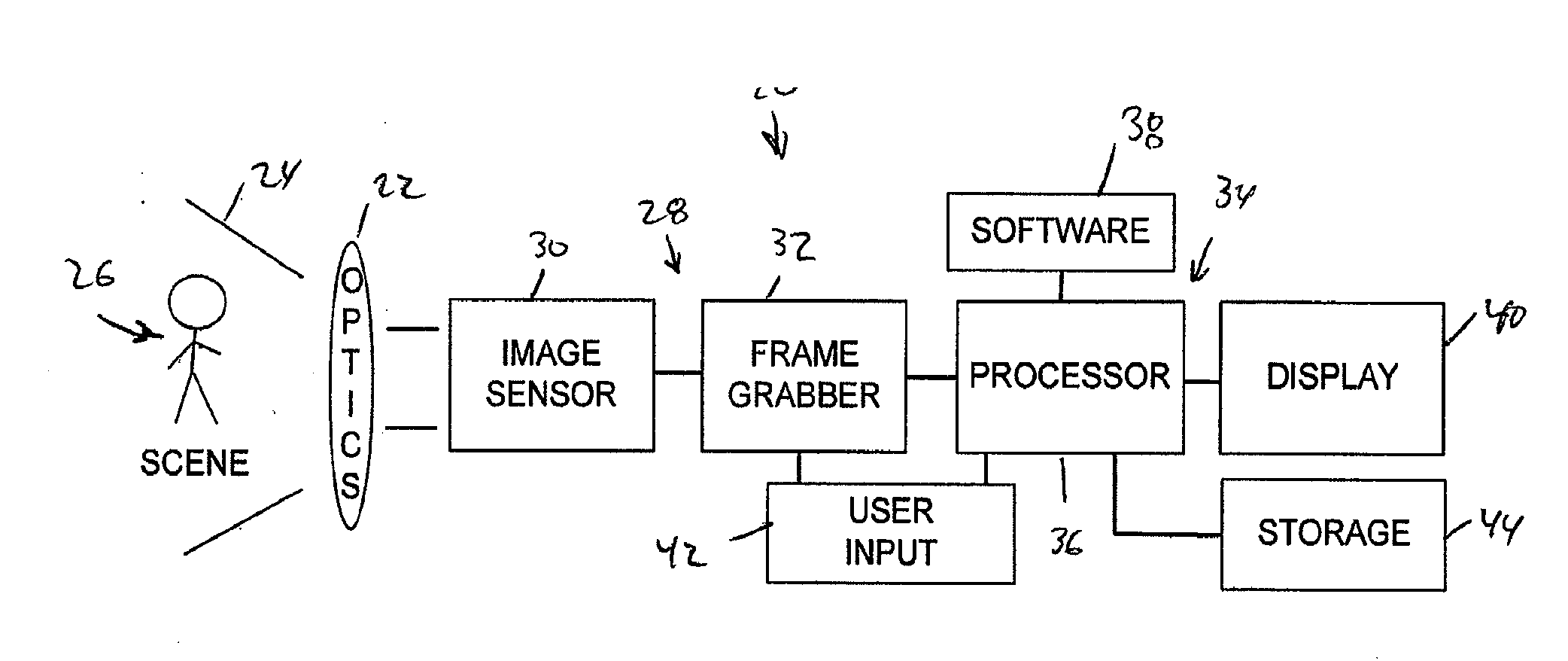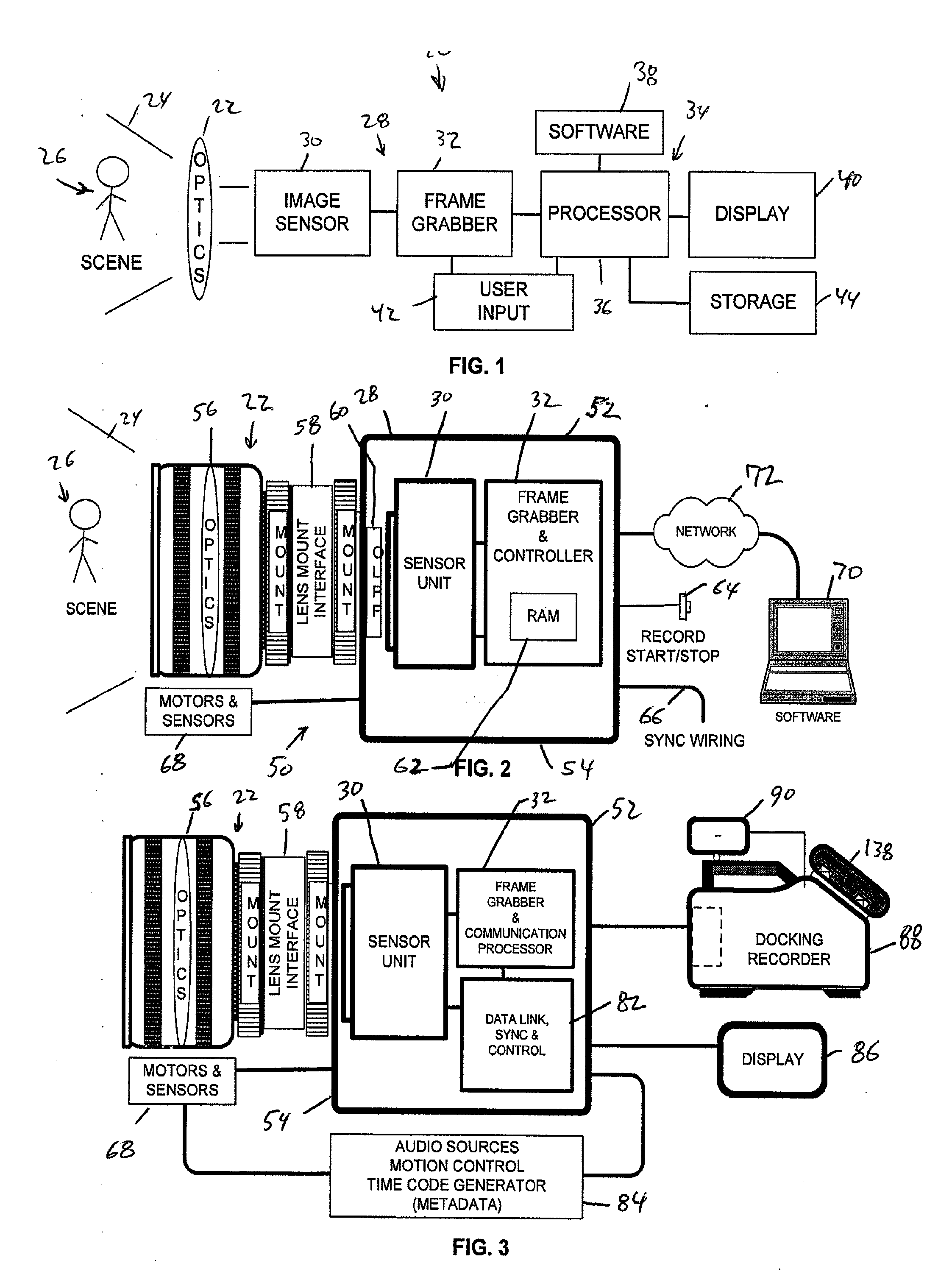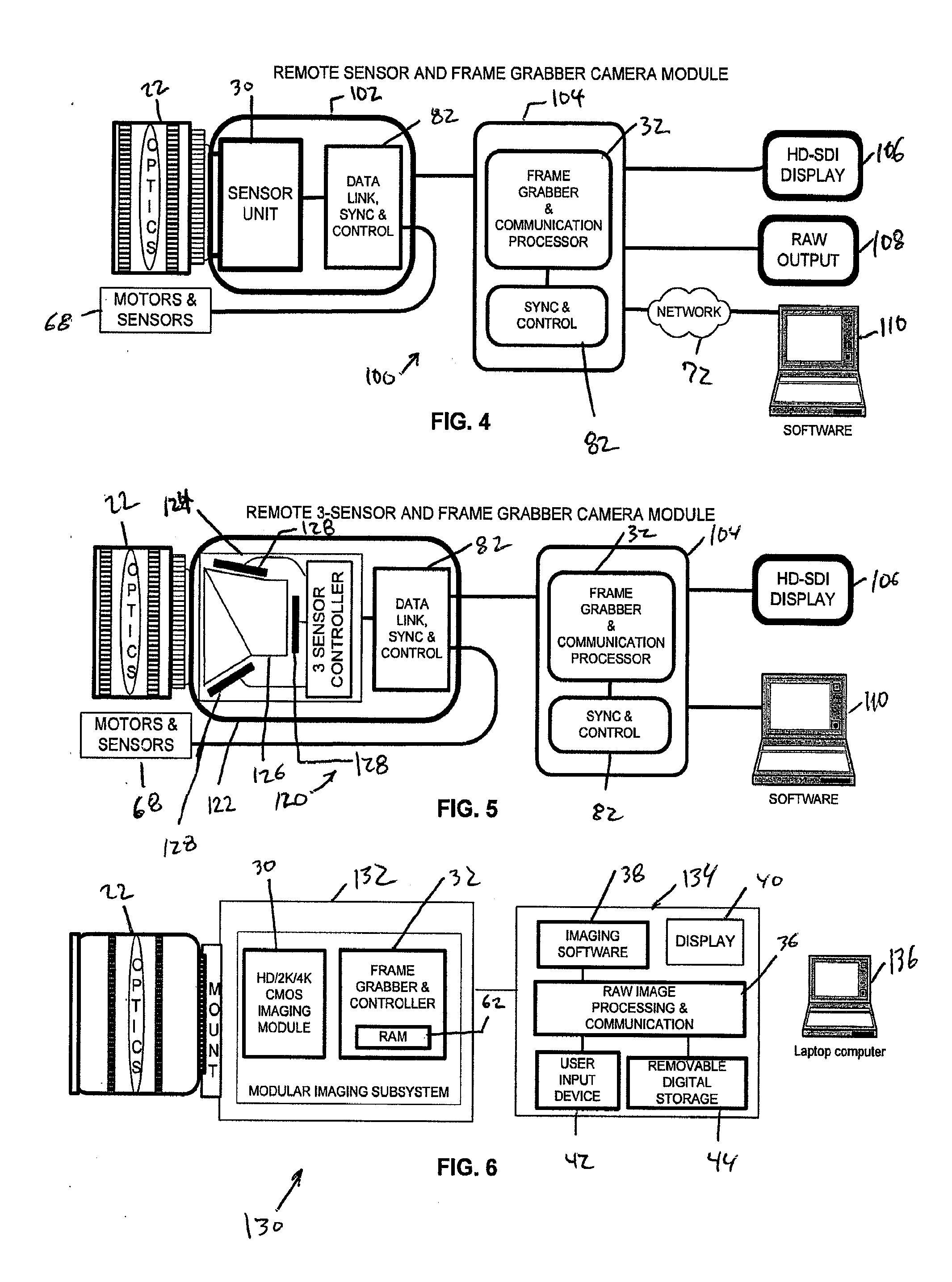Digital Camera System for Recording, Editing and Visualizing Images
a digital cinema and camera system technology, applied in the field of digital cinema camera systems, can solve the problems of inability to manage the network, the complexity of the design of the digital cinema camera, and the inability to fully manage the network, so as to achieve the effect of reducing the data rate, improving the throughput and reducing the complexity of the design
- Summary
- Abstract
- Description
- Claims
- Application Information
AI Technical Summary
Benefits of technology
Problems solved by technology
Method used
Image
Examples
Embodiment Construction
[0025]As shown in FIGS. 1-12 for purposes of illustration, the present invention resides in a digital camera system that captures scalable resolution, bit-depth and frame rate raw or color processed images from one or more modular imaging modules at precise film or video rates. The present invention utilizes industry standard cabling infrastructure for transmitting either the raw sensor data or processed raw on the same or different links. The present invention provides a mechanism for timing synchronization of exposure and readout cycles from multiple imaging modules. The present invention also provides a unified software or operator interface to control the capture, processing and non-destructive visualization from one or more imaging modules. The present invention can optionally combine live imagery with previously stored imagery or computer generated virtual sets, while simultaneously recording the raw, broadcast format, or visualization processed imagery in its original or near...
PUM
 Login to View More
Login to View More Abstract
Description
Claims
Application Information
 Login to View More
Login to View More - R&D
- Intellectual Property
- Life Sciences
- Materials
- Tech Scout
- Unparalleled Data Quality
- Higher Quality Content
- 60% Fewer Hallucinations
Browse by: Latest US Patents, China's latest patents, Technical Efficacy Thesaurus, Application Domain, Technology Topic, Popular Technical Reports.
© 2025 PatSnap. All rights reserved.Legal|Privacy policy|Modern Slavery Act Transparency Statement|Sitemap|About US| Contact US: help@patsnap.com



